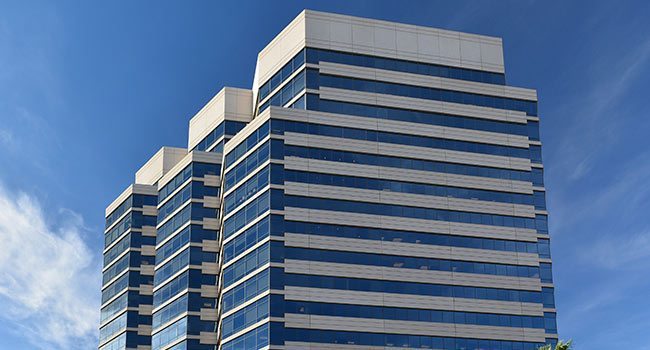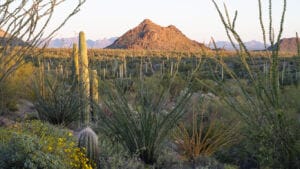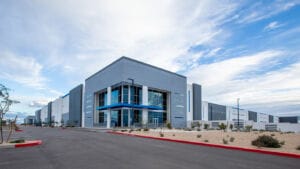
If you own an expensive sports car, you ensure the vehicle’s value and longevity by making sure it is cared for by the most qualified professionals. Likewise, owners of a multi-million-dollar buildings tend to want the same thing.
Building certifications, awards and designations can help add value to a property, but not every designation adds the same value because of the nature of its focus.
With that in mind, the Building Owners and Managers Association (BOMA) International decided to unveil the BOMA 360 Performance Program in 2009, which has proven to increase a property’s value, occupancy and tenant satisfaction rates.
While most building designations in the industry are quantitative in nature giving energy performance scores and sustainability ratings like the U.S. Green Building Council’s Leadership in Energy and Environment Design certification, the BOMA 360 Performance Program tends to be more qualitative and holistic.
Joel Corley, BOMA 360 Performance Program director for BOMA International, says the industry wanted something broader than the LEED and Energy Star certifications, which while valubale in their own respects, primarily focus on the physical qualities of the property related to energy and sustainability.
“We wanted to come up with a designation that not only spoke to the physical attributes of the building but also the human component that go into making those buildings run efficiently and harness their full potential,” he adds.
After all, even a LEED Platinum certified building cannot run itself without the lifeblood and operations that ensure it is maintained and protected.
BOMA 360 encompasses all the major aspects of property management like energy and sustainability but it goes beyond that to include components like emergency preparedness, preventative maintenance, education, communication and efficiency of service.
Since the program started in 2009, more than 1,500 BOMA 360 designations have been granted with more joining the ranks every quarter after applications are reviewed.
Although the program is not as familiar to many in the industry as the LEED certification, buildings that have the BOMA 360 designation command higher rental income, tenant retention rates and lower vacancy rates than buildings without the designation.
Arizona is currently home to eight BOMA 360 buildings.
Added Value
Not only do BOMA 360 buildings average $8 more per square foot in rental rates compared to those without, it’s also valuable for tenants, brokers, building owners and property managers for reasons beyond strictly financials.

“It gives property managers, teams and companies a way to measure the areas they are doing well in and others where there is room for improvement,” Corley explains. “This is one of those unique tools that’s a market differentiator. This is what sets us apart.”
Marii Covington-Jones, general manager at McCarthy Cook & Company, currently has three BOMA 360 buildings in the Valley.
She says the occupancy at Camelback Commons in Phoenix has increased by 27 percent since receiving the BOMA 360 designation in addition to higher tenant retention and satisfaction rates.
“McCarthy Cook & Co.’s motto is ‘relationship driven experience’ and BOMA 360 helps us provide that experience by putting the best in class management practices in place,” she explains.
BOMA 360 helps layout a roadmap for management companies to learn where it excels and where deficiencies might be, which is valuable in an industry where any advantage to sell or lease a property is critical.
Tom Hatch, property and asset manager at Forum Property Services, responsible for Portales Corporate Center in Scottsdale, says, “Earning the BOMA360 designation was a great way for Forum Property Services to differentiate ourselves from other joint-venture and third-party management companies working for our ownership group.”
Not only does BOMA 360 create more tangible benefits than LEED and Energy Star certifications, but it is also significantly cheaper to apply.
“Not everybody can afford to go for a LEED certification,” says Karen Piper, former president of BOMA Greater Phoenix in 1993 and 2013 and current regional operations manager at LBA Realty. “It’s an expensive process and it’s not as expensive to go through BOMA 360.”
She adds the LEED process typically involves hiring a third-party consultant, application and consulting fees plus the retrofitting costs, which when combined can total $30,000 to $70,000 dollars.
“BOMA 360 is a much more cost effective way for building owners and managers to achieve a recognition for their management skills and capabilities without having to spend a tremendous amount of money, time and effort that’s required to go after LEED certification,” Piper explains.
Application process
Although the scope of the BOMA 360 Performance Program is broad, Hatch describes the application as fairly intuitive and easy to complete.
“If a property management team has all the required policies, procedures and protocols in place and in writing, the application should only take a couple of weeks.”
The application may take longer for less organized management firms that need to track down the needed documents, but Corley, who takes pride in walking applicants through the process from day one through their renewal three years later, sees this as a teaching moment.
“One of the end goals is to strengthen our industry and make for a more knowledgeable and well-rounded core of property professionals,” he explains. “We want you to improve your processes and become more organized.”
For property and asset managers constantly looking at how they can add value to their assets, it can be used as a valuable self-auditing process.
Hatch says the BOMA 360 application and certification process provides an excellent opportunity for property managers to assess how their operational systems and day-to-day procedures compare to other management companies at first rate facilities.
The entire application process is done online and starts with creating a building profile, which can be for one or more buildings.
Broken into six major areas in scope in addition to prerequisite criteria, Corley says, applicants go through subcomponents of each section and upload documentation.
Before the application can be formally submitted for official review, the building must meet the minimum point threshold for each section.
The cost for submitting an application for a building under 100,00 square feet can be as low as $900 for BOMA members or as high as $2,280 for nonmembers applying for a building over 600,000 square feet.
At the end of the day, Corley says the greatest return on investment you’ll receive from the BOMA 360 Program is confidence in the management and operational practices in place at your building and peace of mind for your investors knowing the asset is being protected to the highest industry standards and that tenants are receiving quality service.






